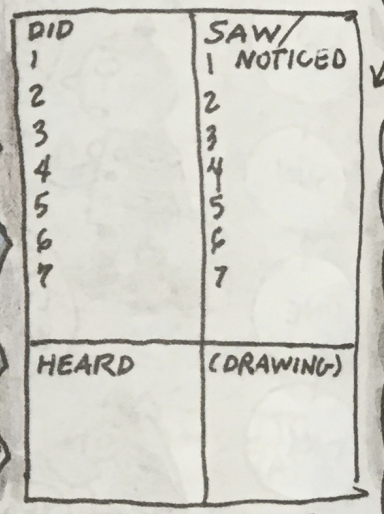Creativity is so important in the worlds of both film and events. It might seem obvious how creativity comes into filmmaking, from writing a narrative to designing shots, building an aesthetic to drawing animation. But creativity can also be at the heart of events, especially ones looking to create an experience for their attendees and take them on a journey. In that case, storytelling is a big part of working in both these areas. And in the context of corporate film and events, where you are delivering work for clients such as companies and charities, you need to tell the story of a brand to a customer or to the internal team of a company.
‘Creativity’ can seem daunting. In school, creativity is often spoken of in the context of music, visual art, theatre and writing. If you’re drawing skills aren’t up to scratch, you can’t sing in tune, or you’re not scribbling sonnets in the back of your notebook, it’s easy to think you’re not creative. But when we talk about creativity, we don’t just mean craft. We also mean the ability to think creatively, to come up with innovative solutions to client briefs and problems that present themselves during the process of making a film or delivering an event, to think outside the box.
So how can you unleash that creativity? We’ve put together a short list of ways you can get your creativity flowing, whether that’s to write your next film script or solve problems everyone else is stumped by!
Draw without looking at the page
Sit opposite a friend or a colleague, set a timer for 1 minute and then draw them, without looking at the piece of paper. One minute later you will have a drawing that will probably look nothing like them, that will be imperfect and funny. Do it again. Get used to making things that are imperfect. Ideas are often bad, but if we are scared to have bad ideas, we might miss out on the good ones.
A couple more drawing exercises you can try:
- Draw the person sitting opposite you in 2 minutes without taking your pen or pencil off the paper.
- Draw the person sitting opposite you in 1 minute with your non-dominant hand.
- Draw a squiggle onto a page without looking. Then look at it and try to turn it into a character.
Freewriting
Freewriting can take all sorts of forms. It can come from nothing or it can come from a prompt. It’s a great, no pressure way to release some words. Julia Cameron, author of ‘The Artists Way’ recommends starting your day by writing what she calls ‘morning pages’: three pages of longhand, stream of consciousness writing, done first thing in the morning. She says, “There is no wrong way to do Morning Pages – they are not high art. They are not even “writing.” They are about anything and everything that crosses your mind– and they are for your eyes only. Morning Pages provoke, clarify, comfort, cajole, prioritize and synchronize the day at hand. Do not over-think Morning Pages: just put three pages of anything on the page…and then do three more pages tomorrow.”
If starting from nothing feels too overwhelming, here are a few prompts you could use to start you off:
- Begin your freewriting session by writing ‘I remember…’
- Begin your freewriting session by writing ‘I am from…’ (think outside the box here, not just where but what, and when e.g. I am from plants I haven’t watered, the smell of men’s shower gel, the person who last loved me)
- Open the book you are reading at any page, pick a sentence and then use that as your first sentence and write for ten minutes
- Use the final line of the book you are reading and make it your first
Fast daily diary

Cartoonist Lynda Barry has come up with a diary format you can do in just a few minutes at the end of every day. In the first box you take a quick note of 7 things you did today, from the big to the small (brushing your teeth, eating a sandwich). In the second box you write 7 things you noticed today. Again, big or small work just as well (mustard on a pink tie, someone on the tube wearing odd socks).In the third box you write down verbatim something you heard someone say. And in the final box you draw something, anything you can remember from your day.
The four square format has a few different purposes. As well as getting you to write and draw in a low pressure and brief today, it also encourages you to look and listen to the world around you in an engaged way. It’s also a compendium of the things you notice. You’ll see far more than 7 things in one day, so why have you remembered these? Perhaps after doing this for a month you’ll realise you are always noticing something particular that you’d like to make the focus of your next project.
Look for inspiration in strange places
Look for local newspapers and try to make a short story out of one of their news items. Read an article about an area you know nothing about and see what it sparks for you. Go and see a film or a show that sounds like nothing you’ve seen before. And try to speak to the people you meet there. Take a class where you can learn something new.
Or go granular. Use the microwaving instructions on the back of your lunch or the ingredients list on the back of the biscuit wrapper as a starting point to try and write something. What kind of story could they tell? These sorts of activities can help finds ideas in unexpected places, and approach problems with new perspectives and angles.
These are just a few ways to get your creativity flowing and your mind thinking outside the box!


